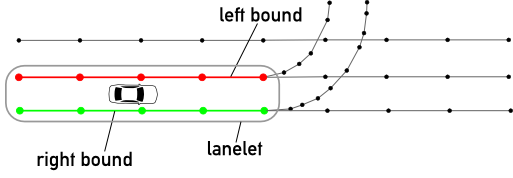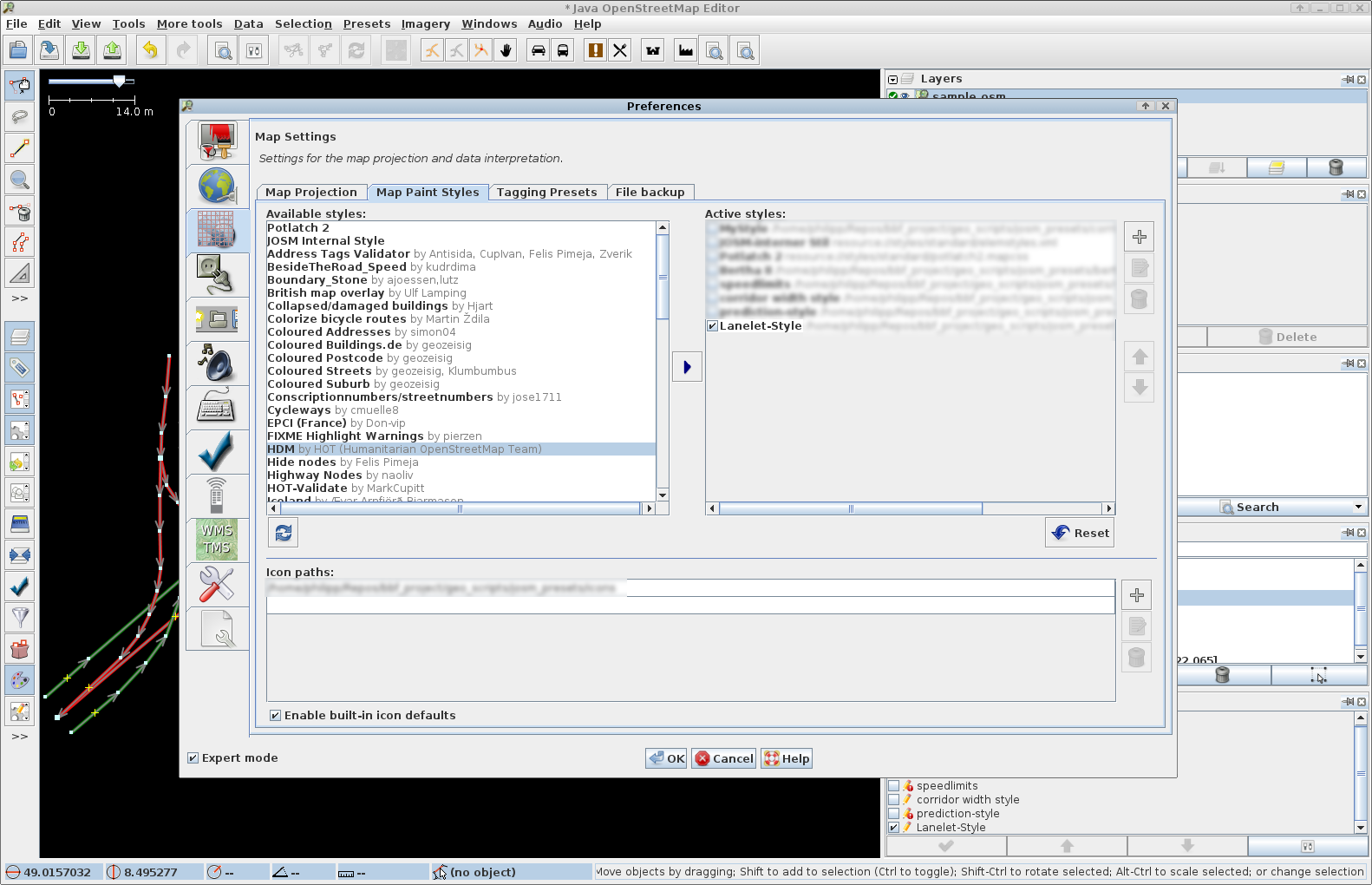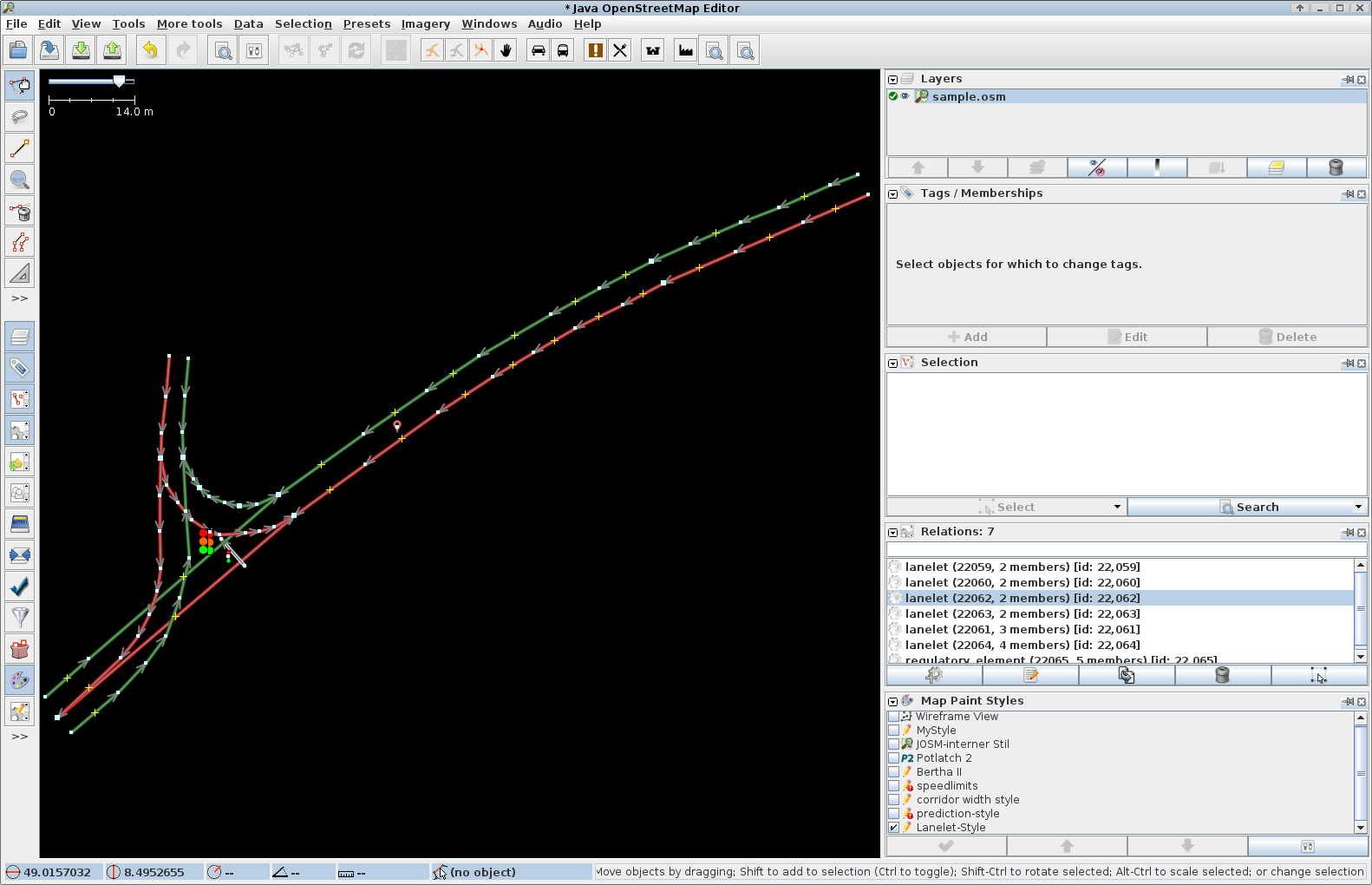| Author: |
Philipp Bender <pbender@fzi.de>, Julius Ziegler <ziegler@fzi.de> |
|---|
| Date: |
April 16, 2014 |
|---|

Lanelet maps [1] have been introduced in the context of the autonomous
completion of the Bertha-Benz-Memorial-Route in 2013 [2].
The lanelet concept includes a map specification as well as an editing
tool chain. The lanelet maps are built on top of
libLanelet (provided here)- the OpenStreetMap (OSM) file format [3]
- JOSM, the Java OSM editor [4]
- The RAILS port, which provides the OSM server [5]
osmosis to retrieve bigger portions of the map from the database [6]
All components are open source and users profit from lanelet maps immediately.
libLanelet is a library which
- parses OSM XML files
- builds the lanelet map
- provides access to the attributes of lanelets and regulatory elements
- allows routing through the graph
- is released under the terms of the GNU General Public License version 3 or later [7].
- Download libLanelet
- Follow the install instructions given in the
README file (especially about the depedencies) and this video:
- Make a map and parse it with libLanelet (there is a video as well)
- Use
libLanelet in your software. A good point to start is demo.cpp as well as the test cases in lanelet_tests.cpp.
Additionally, the archive contains
a JOSM style file as well as the corresponding icons. To activate the style,
- press
F12 to get into the configuration dialog
- in the third tab (titled settings for the map projection), go to Map Paint Styles and press the
+ to add the style sheet. In the area below, append the icon directory to the list.

The dialog to activate the style sheet.

A screenshot of JOSM. The coloring scheme of the bounds is consistent with the paper: red for left bounds, green
for right bounds.
- The thing with the OSM-IDs
- JOSM does not know about global IDs. So when you create new elements, they will have a negative ID which indicates that the element is not known
to the OSM server. As soon as this element is uploaded, the server will assign a globally unique ID which is stable at least
during the element's life. Until then, JOSM displays 0 as ID unless you hange osm-primitives.showid.new-primitives to true in
Preferences / [x] Expert mode / Advanced Preferences.
- The thing with the node identity
- Points (or better nodes) are considered identical if they have the same ID. It is not sufficient to place two different points near each other. Usually
this causes trouble with lanelet adjacency.
- Bender, J. Ziegler, D. Nienhüser, E. Ward
| [1] |
- Bender, J. Ziegler and C. Stiller: Lanelets: Efficient Map Representation for Autonomous Driving, submitted to IEEE Intelligent Vehicles Symposium (IV), 2014.
|


